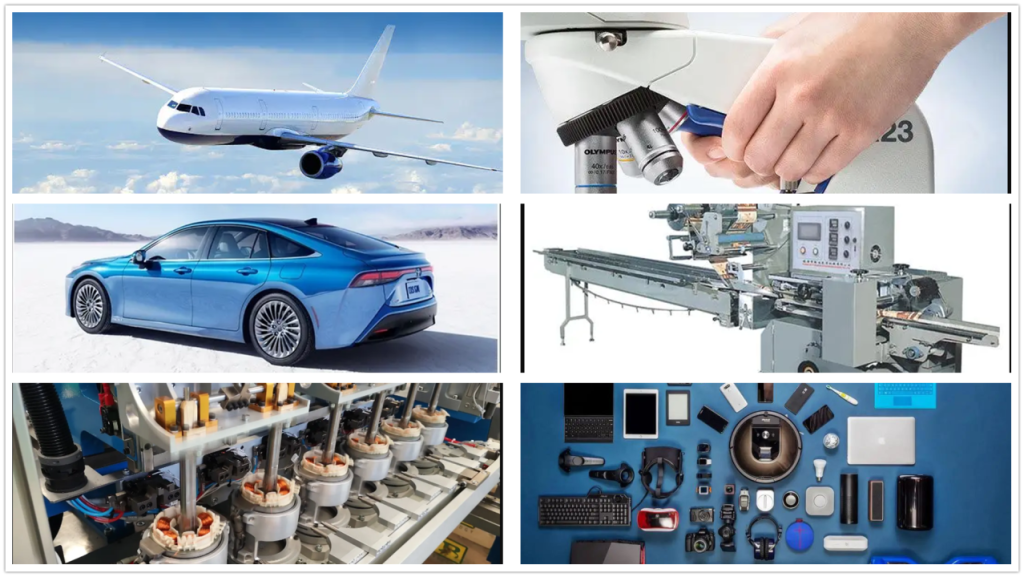
In today’s precision-driven manufacturing world, Computer Numerical Control (CNC) has become indispensable. It enables rapid production, tight tolerances, and complex designs—all while minimizing human error. But what exactly is CNC, how does it work, and why is it so important across industries?
This blog will guide you through the fundamentals of CNC, its components, applications, and its growing role in smart manufacturing. Whether you’re new to the concept or evaluating a partner for CNC machining, this guide will give you everything you need to know.
What is CNC?
Computer Numerical Control (CNC) is a digital automation system used to control machining tools like lathes, mills, routers, and grinders. Instead of manually guiding these tools, CNC relies on coded instructions—usually written in G-code and M-code—to precisely dictate movement, speed, depth, and feed rate.
CNC machinery can execute highly intricate operations without human intervention. All the operator needs to do is load a program and monitor progress. This dramatically improves speed, safety, and repeatability in the production process.
🔗 Looking for CNC machining solutions? Boona Prototypes offers expert CNC machining services, including sheet metal prototyping, precision parts fabrication, and more.
A Brief Look at CNC History
CNC’s roots stretch back to the late 1940s, with early systems running on punched tape. By the 1950s, engineers like John Parsons and Frank Stulen were pioneering early CNC methods for helicopter components. As digital computing advanced through the 1960s and 70s, punched tape was replaced by flexible, computer-driven interfaces. Today’s CNC machines are equipped with high-performance microprocessors, intuitive software, and feedback systems that deliver exceptional accuracy.
Key Components of a CNC System
A fully operational CNC setup typically includes:
-
Control Unit (MCU): The brain that interprets and executes the program.
-
CAD/CAM Software: Where parts are designed (CAD) and machining instructions are generated (CAM).
-
Motion Control Hardware: Includes servo motors, ball screws, and guides to convert commands into movement.
-
Input/Output Devices: Interfaces like keyboards, USBs, and touchscreens allow users to load files, adjust parameters, and monitor the process.
How CNC Works
The CNC process begins with a CAD design, which is then converted into a tool path by CAM software. This data becomes a series of commands (like G01 for linear movement or G02 for arcs), which the machine reads in sequence. The control system interprets these lines and sends corresponding signals to motors and actuators. Feedback loops allow the machine to make real-time adjustments, ensuring exceptional precision.
Coordinate System
Most CNC machines operate using the Cartesian coordinate system:
-
X-axis: Left to right
-
Y-axis: Front to back
-
Z-axis: Up and down
More advanced machines offer rotary axes (A, B, C) to approach the workpiece from different angles, enabling multi-axis machining in 5 or even 6 directions.
Popular CNC Processes and Their Applications
CNC is not limited to just milling or turning—it encompasses a broad set of manufacturing processes:
| Process Type | Description |
|---|---|
| Milling | Rotating cutters remove material from a fixed workpiece. |
| Turning | The workpiece rotates while a tool carves shapes. Ideal for cylindrical parts. |
| EDM | Uses electric sparks to shape hard metals and detailed components. |
| Grinding | Achieves high surface quality through abrasive wheels. |
| Laser Cutting | Offers pinpoint accuracy on metals and plastics. |
| Waterjet Cutting | Cuts without heat, ideal for stone, glass, and composites. |
| Plasma Cutting | Efficient for thick metal sheets. |
| Routing | Perfect for woodworking and soft material shaping. |
| 3D Printing (Additive) | Adds material layer by layer, guided by CNC commands. |
🛠️ For custom part design and CNC prototyping, Boona Prototypes provides end-to-end support—from CAD modeling to machining and finishing.
CNC in Modern Industries
CNC has transformed a wide range of industries:
-
Aerospace – Engine components, turbine blades, housings
-
Automotive – Engine blocks, gears, suspension parts
-
Electronics – Heat sinks, enclosures, connectors
-
Healthcare – Prosthetics, implants, surgical tools
-
Defense – Armor, drones, high-precision parts
-
Furniture/Woodworking – Decorative panels, cabinetry
-
Energy – Turbine frames, solar brackets, windmill hubs
-
Robotics – Structural frames, tool attachments, mounting kits
Benefits of Using CNC
Here’s why manufacturers of all sizes embrace CNC:
-
Repeatability: Each part comes out the same, even across thousands of units.
-
Speed: Machines operate continuously with minimal downtime.
-
Accuracy: Tolerances within microns are achievable.
-
Flexibility: A program change is all it takes to switch products.
-
Safety: Operators stay out of direct contact with cutting tools.
-
Scalability: Ideal for both prototypes and large-scale production runs.
G-Codes and M-Codes: The CNC Language
CNC machines understand G-codes (geometric functions) and M-codes (machine commands). Examples include:
| Code | Function |
|---|---|
| G00 | Rapid move |
| G01 | Linear cut |
| G02 | Clockwise arc |
| M03 | Spindle on (clockwise) |
| M05 | Spindle off |
| M08 | Coolant on |
| M30 | End of program |
Programs are created either manually or generated automatically by CAM software. Simulations help identify toolpath errors before physical machining begins.
CNC Software Stack
Three key types of software are used in CNC operations:
-
CAD (Computer-Aided Design): Used to design parts and assemblies.
-
CAM (Computer-Aided Manufacturing): Converts CAD files into G-code.
-
CAE (Computer-Aided Engineering): Analyzes designs for structural, thermal, or vibrational performance.
NC vs. CNC: What’s the Difference?
| Feature | NC (Numerical Control) | CNC (Computer Numerical Control) |
|---|---|---|
| Program Storage | Punched tape | Digital memory |
| Flexibility | Limited | High—easy to edit programs |
| Automation | Basic | Advanced with real-time feedback |
| Programming | Manual | Assisted by CAD/CAM tools |
| Capability | 2-axis control | Multi-axis interpolation |
CNC represents the natural evolution of NC, driven by digitization and AI-enhanced automation.
Future of CNC: Smarter and More Connected
Emerging trends are pushing CNC into the Industry 4.0 landscape:
-
IoT Integration: Real-time monitoring of machine health and productivity
-
AI Optimization: Predictive maintenance and adaptive programming
-
Autonomous Machining: Full-cycle production with minimal human input
As these technologies mature, CNC systems will become smarter, faster, and more autonomous.
Final Thoughts
CNC machining is more than just a tool—it’s a transformative force in the world of manufacturing. Its precision, efficiency, and scalability make it a cornerstone for industries aiming for innovation and cost-effective production.
Whether you’re looking to build one prototype or mass-produce a thousand parts, partnering with experts like Boona Prototypes ensures high-quality results with fast turnaround and engineering support.
FAQ
Q: Is CNC machining hard to learn?
Not at all. Basic CNC concepts can be picked up in a few weeks. Advanced operations may take months, depending on complexity and machine type.
Q: Is CNC a skilled trade?
Yes. CNC combines programming, mechanical knowledge, and hands-on skills. Certifications and real-world experience are valuable for becoming a proficient CNC technician.
Ready to get started?
Explore Boona Prototypes’ CNC services to upload your drawings, request a quote, or talk with an expert. Your next high-precision part is just a few clicks away.



